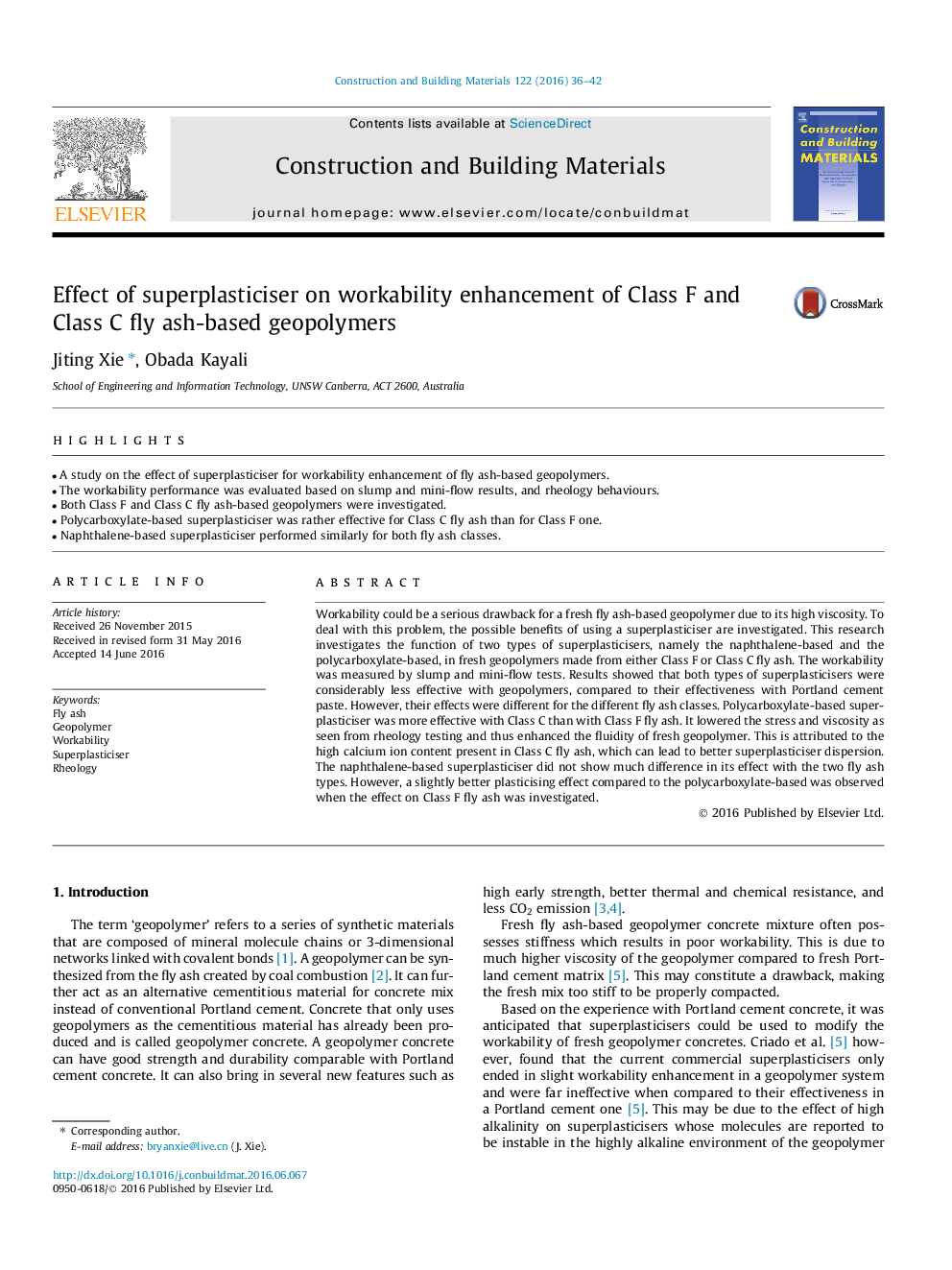| Article ID | Journal | Published Year | Pages | File Type |
|---|---|---|---|---|
| 6717855 | Construction and Building Materials | 2016 | 7 Pages |
Abstract
Workability could be a serious drawback for a fresh fly ash-based geopolymer due to its high viscosity. To deal with this problem, the possible benefits of using a superplasticiser are investigated. This research investigates the function of two types of superplasticisers, namely the naphthalene-based and the polycarboxylate-based, in fresh geopolymers made from either Class F or Class C fly ash. The workability was measured by slump and mini-flow tests. Results showed that both types of superplasticisers were considerably less effective with geopolymers, compared to their effectiveness with Portland cement paste. However, their effects were different for the different fly ash classes. Polycarboxylate-based superplasticiser was more effective with Class C than with Class F fly ash. It lowered the stress and viscosity as seen from rheology testing and thus enhanced the fluidity of fresh geopolymer. This is attributed to the high calcium ion content present in Class C fly ash, which can lead to better superplasticiser dispersion. The naphthalene-based superplasticiser did not show much difference in its effect with the two fly ash types. However, a slightly better plasticising effect compared to the polycarboxylate-based was observed when the effect on Class F fly ash was investigated.
Related Topics
Physical Sciences and Engineering
Engineering
Civil and Structural Engineering
Authors
Jiting Xie, Obada Kayali,
